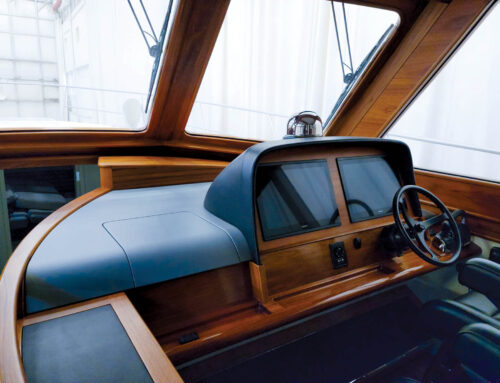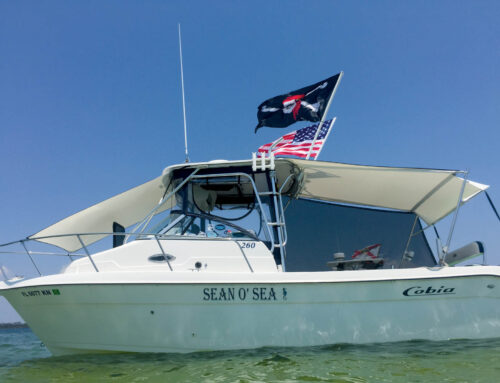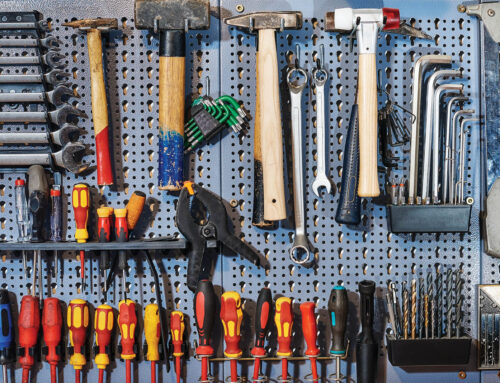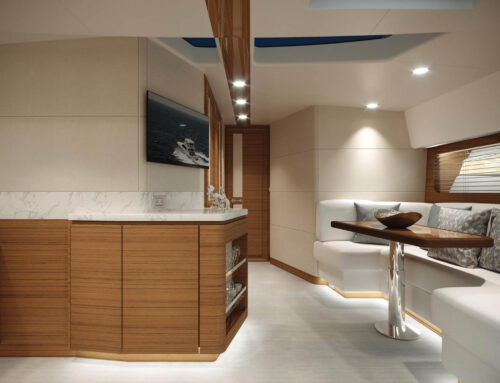Considering automation in your shop? Read this first

Tecsew Ltd. uses a Blackman and White Genesis conveyor cutting system and fabric feeder. The fabric feeder moves the fabric to keep it lined up with the datum on the conveyor. This model replaced a basic flatbed cutter from Blackman and White the company used for 10 years. Photos: Tecsew Ltd.
Automation continues to play an increasingly important role in everyday life. Its potential effect on a marine fabricator’s workplace has, unsurprisingly, become a focus of both research and reality. The topic can become a bit like playing 20 Questions: What jobs will or won’t be replaced by machines? Which equipment will serve as the best substitute for measuring, patterning, cutting and fabricating? Where do you start sourcing the right equipment? When should you start considering automation and, perhaps more important, why?
At Sand Sea and Air, we use Excel spreadsheets to calculate yardage and to track material expenses and production time. We also find Trello, a free task management software program, to be helpful. However, we have yet to adopt many of the automatic systems described in this article. Like many fabricators, we are currently studying our options and I hope this article provides some additional food for thought.
 The good, the bad and the ugly
The good, the bad and the ugly
Names like Eastman® (cutters), Prodim (Proliner) and Carlson (software) promise to generate greater efficiencies in marine shops around the globe. Automation replaces routine or repetitive tasks such as taking measurements, developing patterns and ordering materials. This increases efficiency and can free up time to develop innovative design concepts that encourage creativity and problem solving based on clients’ requests.
Automation of specific work activities has been a solution for marine shops that struggle with finding and training employees. Some business owners favor investing in equipment rather than in employees who come with no warranties or guaranteed years of service.
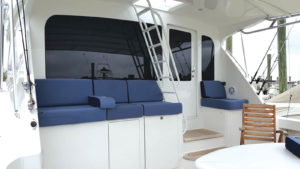
Darren Arthur of Nautilux Custom Canvas started with simple 2-D photogrammetry four years ago. He now uses a 3-D laser system for measuring and a Proliner 3-D system for patterning in conjunction with Rhino CAD modeling software. These tools allow him to work alone safely at the marina to pattern a full enclosure or complex shapes. Photo: Darren Arthur.
However, given the up-front costs and management requirements of automation, it’s an investment that also comes with risks and challenges. Continual improvements and digital enhancements can mean that a significant outlay becomes outdated more quickly than planned.
Automating specific tasks means fabricators will have to grapple with the tricky business of redefining employee roles. Additionally, there isn’t a single machine that magically does everything in the shop—measuring, pattern layout and cutting are tasks that require different types of sophisticated equipment.
Learning the nuances of CAD (computer-aided design) programs and other pieces of equipment can be overwhelming. Most brands of sewing machines are now considered a minor hurdle in the vast assortment of automated offerings. Shop owners need to keep an eye on the speed and direction of automation, for starters, and then determine where, when and how much to invest.
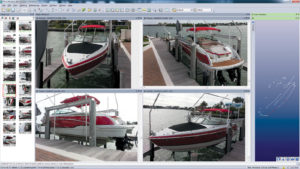
Using 3-D photogrammetry allows Ed Skrzynski, Marco Canvas & Upholstery, to pattern faster and reach every area on a boat. He can cut a dodger and glass in about 15 minutes.
Love it or hate it, automation is the future. The extent to which fabricators embrace it will influence not only the pace of change within their companies, but also to what extent their businesses sharpen or lose their competitive edge. Experts estimate that 45 percent of work labor could be automated using current technology, and the number is growing.
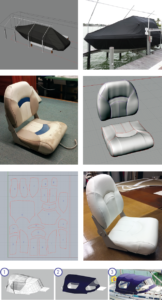
Top: Point-to-point patterning with Proliner and Disto S910 laser.
Second row: Photo on left shows the old skin. Photo on right shows MPanel 3-D model of the seat.
Third Row: Left photo shows pattern with seam allowance. Right photo shows the finished product. Photos: Ed Skrzynski.
Bottom: Tecsew Ltd.’s unique 3-D design process. Photo: TecSew Ltd.
Before you pull the trigger
As you mull over the automation options for your shop, here are some points to consider:
What equipment are you going to use to get the more than 30 contact points you will need to interface with a CAD program? Does it make more sense to skip the CAD interface and instead feed the XYZ points from a laser to a tablet and then import the data into Rhino? Run all the scenarios before pulling the trigger.
Most likely you’ll want to see the points of your pattern take shape on a visual screen to know that you have taken the correct measurements. What do you need to accomplish this?
You will need plenty of time to become proficient with your CAD program. Be realistic and build this into your training and ramp-up schedule.
Jeff Hare of EZ Frame Plus, a computer program for designing and building custom boat tops, at Clearwater Canvas in Clearwater, Fla., recommends working your manual patterning process alongside the digital one you’re looking to implement. This will help you quickly understand the differences and effects of using the digital process.
Even if you’re not ready to automate tomorrow, now is the time to begin investigating which equipment will work best for your business and space. Decide which automation tasks are a priority for your shop and start putting the money aside today for this investment. The future is now and it’s time for all of us to embrace it.
Terri Madden owns Sand Sea & Air Interiors Inc. in San Juan, Puerto Rico. www.sandseaair.com.
 TEXTILES.ORG
TEXTILES.ORG 


